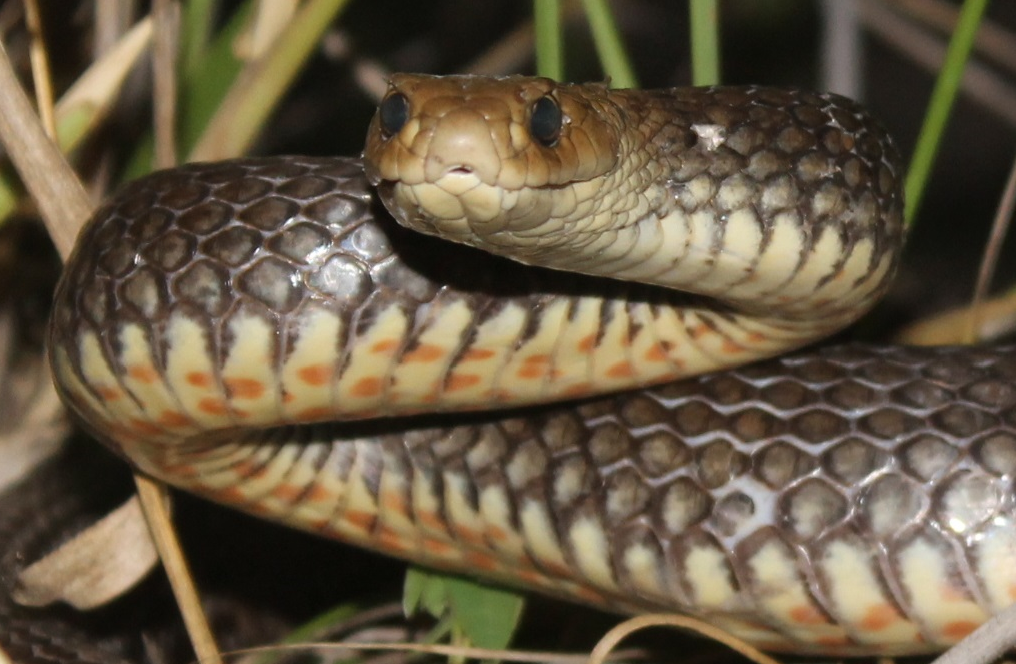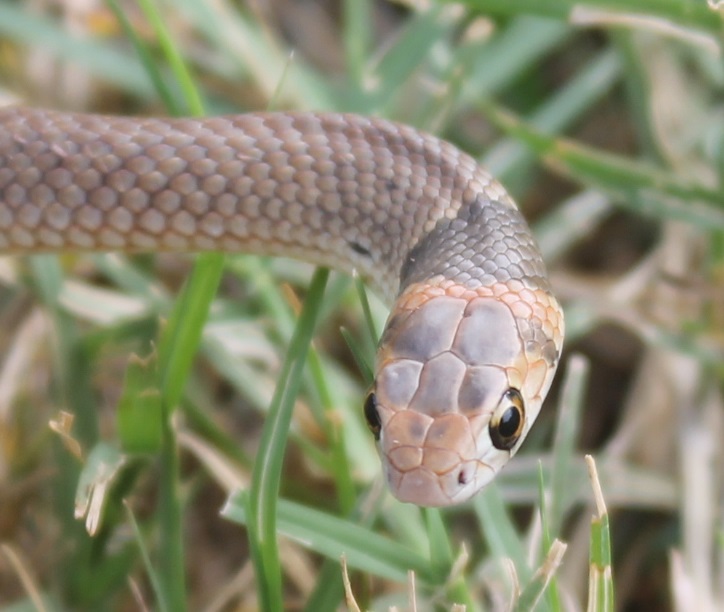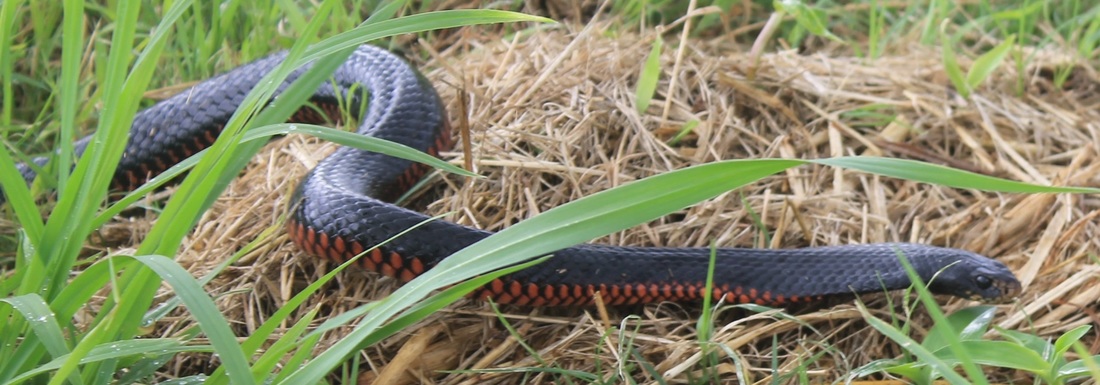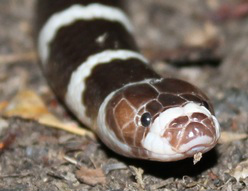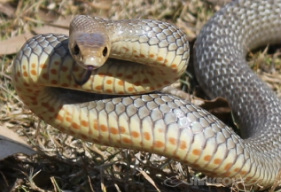SNAKE IDENTIFICATION
Australia is truly the land of the reptile, with over 200 snake and over 700 lizard species. This amazing diversity, while stunning in it’s own right, can lead to difficulties in correctly identifying snakes, especially since we rarely catch more than a glimpse of tail disappearing into cover. If you’re unsure of a species of snake you’ve seen feel free to contact our staff and inquire or send in pictures. We urge, however, you don’t approach unidentified snakes unless with a competent professional. For a more comprehensive list follow this link to the Australian Reptile Online Database.
Below are some of the common species encountered around Brisbane and south east Queensland, as well as a few rarer species.
Eastern Brown Snake,
Pseudonaja textilis.
The second most venomous land snake (as measured by by LD50 in mice), this snake is can be aggressive when provoked, however like all snakes it will make every effort to avoid you. It’s venom contains potent neurotoxins and blood coagulents, blocking nerve signals to the respiratory system and causing severe blood clots. Found all along the east coast and inland ranges of QLD, NSW, Victoria and SA, some arid areas of the NT and in the WA Kimberly region. Isolated populations in New Guinea. Habitats range from sclerophyll forest and heaths to savannah, arid scrubland, grasslands and farmlands. Increasingly found in urban areas. Usually a uniform shade of brown though highly variable, from pale fawn to black, with patterns including speckles and bands. Creamy underside has orange speckles. Juveniles often misidentified as they may be banded and have a black head or darkened nape. May reach 2.4m but usually 1.1 to 1.8m, 17 mid body scales.
Red Bellied Black Snake,
Pseudechis poriphyriacus.
A member of the elapid family of front fanged snakes, this snake is common in forests and swamplands along much of eastern Australia. The venom is less toxic than other Australian elapid or even other black snakes (Genus Pseudechis) with no adult deaths recorded, however it does contain neurotoxic, myotoxic and blood coagulent components. They have a distinctive glossy black dorsal surface with red to pink on the lower flanks and ventral scales. It has an average total length of 1.5 to 2 metres and a mid body scale count of 17.
Common Tree Snake,
Dendrelaphis punctulata.
Another harmless, non-venomous species, however unlike pythons these snakes belong to the family Colubridae, the “rear-fanged” snakes. Some colubrids, like the green tree snake, have no fangs or venom and rely on constriction, or simply eat their prey alive. Common throughout Australia’s northern tropics , including the Kimberly region, to the Torres Straits and Papua New Guinea, and down south along eastern Australia to New South Wales. Generally a fan of lush vegetation and areas near water (being predominantly frog eaters), although sclerophyll forest, raiforest edges, heathland and grassland are also suitable. Common around suburban gardens, particularly with rocky ledges, pools, fountains and vegetation. Large eyed, typically green in colour but varying from golden yellow and grey headed in the north through to black and even pale blue. Blue flecks often seen between body scales, particularly when threatened, and often with bright yellow faces, throats and ventral surfaces. Grows to 2 meters, 13 mid body scales, rarely 15.
Coastal Carpet Python,
Morelia spilota mcdowelli.
This non-venomous constrictor is the coastal subspecies of Morelia spilota, the carpet python. This subspecies is common in eastern QLD and northeast NSW, inhabiting roofs of houses even in the suburbs, though naturally occurring in most wooded habitats such as rainforest, sclerophyll forests and heathlands. Carpet pythons are found throughout Australia, except the arid center, western and southern regions, however it also occurs in Indonesia and Papua New Guinea. This eastern variant are usually olive brown with darker blotches and stripes, often with greenish hues and creamy yellows, however colour is highly variable. Infra-red (heat sensitive) pits line the lower jaw scales and snout, allowing them to hunt at night. Reaching over 3 meters in length, though carpet pythons have been known to reach 4.5 meters. 40-60 mid body scales.
Yellow-faced Whip Snake,
Demansia psammophis.
A small slender elapid, though less venomous than many species, its bite is still causes local pain, severe swellling and a potential health risk. Lives in open woodland, sclerophyll forest, arid scrub and grassland, along the east coast (excluding the cape, southern Victoria and Tasmania), from NSW ranging across to SA and southern NT, and into WA. Pale bluish grey to olive green with a copper tinge on the first third of the dorsal surface and nape. Has a distinct cream or yellow ring around the eye, a comma shaped black dash below the eye and a dark line across the snout. 15 mid-body scales, grows to average length of 80 cm, max 1 meter.
Eastern Small Eyed Snake,
Cryptophis nigrescens.
A small elapid with strongly myotoxic venom, attacking tissue and the bloodstream, however there is only one recorded death in Australia, they are quick to avoid people and mostly nocturnal. A common snake in dry sclerophyll, rainforests, around creeck edges and in montane areas, ranging from Coocktown in the north down to eastern Victoria, inland to the eastern ranges. Uniform black or dark grey with a silvery-white opalescent ventral scales and very small eyes. Ventral surface often light pink, not extending to flanks as in Red Bellied Blacksnake. 15 mid body scales, growing to half a meter.
Marsh Snake,
Hemiaspis signata.
This small, mildly venomous elapid is common along the east coast, preferring moist habitats such as swamps, waterways, rain forest and, of course, marshland, where it feeds primarily on lizards and frogs. It’s bite may cause severe local swelling and be very painful, and while not considered deadly a bite should be treated seriously. Found along the coasts from NSW up to Cooktown in QLD. Ranging from pale olive to black, with a bluish-grey to black underside, this snake is often confused with the eastern brown snake, however the pale yellow upper lip and eye stripe (extending down the neck) give away this species. 17 mid-body scales, averaging 60cm in length but can grown to 1 meter.
Brown Tree Snake,
Boiga irregularis.
An arboreal specialist common around Brisbane, inhabiting trees and shrubs, caves and limestone cliffs, however it is not limited to trees and will often forage on the ground at night. Unlike the ubiquitous Green Tree Snake, this member of the rear-fanged (or fangless) colubrid snakes is venomous, having both myotoxic and neurotoxic components. The bite, while not considered fatal, is painful and can produced severe symptoms with patients requiring ventilation or intubation. Found from eastern and northern coastal Australia, PNG, northwestern Melanesia and eastern Indonesia, with an invasive population established in Guam. While Brisbane forms are generally lightly patterned brown, regional variation produces yellowish/green forms or even beige and with red stripes. 19-23 mid-body scales and up to 2 meters length.
Southern Dwarf Crowned Snake,
Cacophis krefftii.
Sparsely distributed and very shy, spending much of its time in rain forest leaf litter. It is only mildly venomous with very short fangs, and may mock bite but is not inclined to truly strike. Only found east of the Great Dividing Ranges, this snake can be found from around midway up the NSW coast up to around Townsville in QLD, usually in under leaf litter, rocks or timber in moist environments such as rain forests, frequenting garden beds in moister suburbs of Brisbane, but infrequently seen due to its cryptic behaviour. Generally gray to black dorsally, with a yellow/orange band at the nape of the neck and often a darker head shield with white facial flecks and a lime-yellow to creamy underbelly with ventral scales separated by dark black bars. 17 mid-body scales, total length 37cm.
Golden Crowned Snake,
Cacophis squamulosus.
The largest of the crowned snakes, this species is also considered only mildly venomous, however will bluff and mock bite if threatened, rearing into an S-shape to display its bright orange ventral pigmentation, and bites from larger individuals may present a health risk. Found from Canberra, NSW, to Cairns, QLD, this snake prefers deeper forested areas, particularly rain forest on mountain slopes, however can show up in suburbs near waterways and moist environments with good ground cover and shelter. Dorsal surface grayish-brown to dark brown, ventral surface with orange to pink with mid line of black spots. The ‘Crown’ of pale yellow-brown stripe starting at snout & sweeping back along both sides of face, not connecting at the back like C. kreffttii or C. harriettae, instead trailing down the neck. 15 mid-body scaled, generally 50 but up to 90cm.
White Crowned Snake,
Cacophis harriettae.
This small crowned snake species is common in garden beds around Brisbane and SEQ. Again being only very mildly venomous, this species in fact feeds heavily on lizard eggs under soil and leaf litter, making it a common garden or compost companion. Found along the east coast from northern NSW to around Proserpine in QLD in forests, woodland and suburban areas. Gun-metal grey to black on dorsal and ventral surface with a white crown from the snout, past the eye and connecting in a white band across the neck. 15 mid-body scales, up to 50cm.
Bandy Bandy,
Vermicella annulata.
A nocturnal, burrowing elapid, the bandy bandy is virtually harmless and will only bite if severely harassed, producing mild local pain and swelling. Found beneath the soil surface, under stumps, rocks & logs in most habitats, from rain forest to desert, throughout NSW and QLD and into northern Victoria, southeast SA and northeast NT. Glossy scales with starkly contrasting black and white rings down the body create a staccato visual effect when moving and the unique alarm posture of holding the body in a raised loop gives it the alias “Hoop Snake”. 15 mid-body scales, usually reaches 70cm but up to 1 meter.
Freshwater Snake/Keelback,
Tropidonophis mairii.
This colubrid is fangless, inoffensive and harmless, though not to be confused with the Rough Scaled Snake which can be nearly identical, only lacking loreal scales (between eyes and nasal scales). Found near water bodies and in wetter suburbs of Brisbane, this fantastic snake is the only native animal capable of tolerating the poisonous cane toad and can eat tadpoles and smaller toads with seemingly no health effects. Found near coastal and wet regions from northern NSW to the Kimberly region of WA, though it may also be found in forests, pasture land and gardens. Olive brown interspersed with flecks of pale skin with irregular dark banding, and dark bars between upper labial scales. Ventral surface cream and often slightly pink or orange along the edges. The keeled body scales produce ridges along the body, presumably to grip slippery prey like fish and frogs underwater. 15 (rarely 17) mid-body scales, grows to 75 cm.
Rough Scaled Snake,
Tropidechis carinatus.
Not to be confused with the freshwater snake, this elapid is highly venomous with powerful neurotoxins, and will bite readily if handled with several fatalities attributed to this species. Found along the east coast from mid-NSW to the tip of Queensland in rainforests, moist open woodlands and usually associated with waterways, this snake is at home in the water, on the land and will happily climb trees and shrubbery. Brown to olive to dark brown, with dark stripes or blotches, particularly in juveniles, with strongly keeled scales. Ventral surface cream to olive or pale yellow, sometimes blotched with darker patches. Distinguished from the freshwater snake by the abscence of loreal scales or dark barring between labial scales, the undivided anal and caudal scales, and the box shaped head. 23 mid-body scales, grows to 1 meter.

